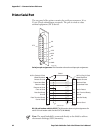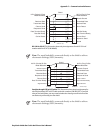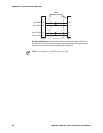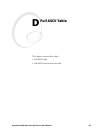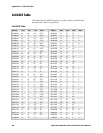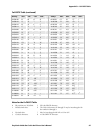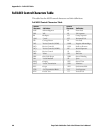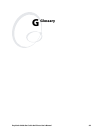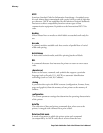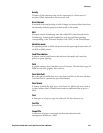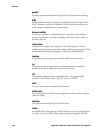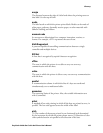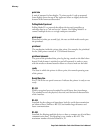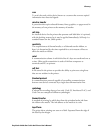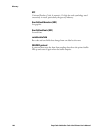Glossary Cd 39 Helvetica CondensedHelvetica
100 EasyCoder 3400e Bar Code Label Printer User’s Manual
ASCII
American Standard Code for Information Interchange. A standard seven-
bit code almost always transmitted with a parity bit for a total of eight bits
per character. ASCII was established by the American National Standards
Institute to achieve compatibility between various types of data
communication equipment. Equivalent to the International ISO 7-bit
code.
backing
Silicon release liner on media to which labels are attached until ready for
use.
bar code
A printed, machine-readable code that consists of parallel bars of varied
width and spacing.
batch takeup
A device that rewinds media; useful for printing batches of labels.
BEL
A command character that instructs the printer to return an error status
code.
character set
Refers to the letters, numerals, and symbols that support a particular
language (such as French, U.S., ASCII) or automatic identification
technology (such as Code 30, Codabar).
cloning
A procedure that copies the RAM contents (configuration, formats, fonts,
pages and graphics) from the memory of one printer to the memory of
another.
configuration
The current parameter settings that determine the operating characteristics
of the printer.
data file
The collection of data and printer commands that, when sent to the
printer, is merged with a format file to print a label.
Data Line Print mode
A mode of operation in which the printer prints each command
(accompanied by its ASCII code) that it receives from the host.



